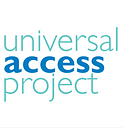Reaching Zero: Fulfilling the Promise of Universal Access to Reproductive Rights

By Seema Jalan
Fifty years ago, the world bore witness to incredible advances in science, the arts, human rights and technology. Neil Armstrong walked on the moon. The first messages were sent through ARPANET, the precursor to the internet. The Stonewall riots in New York City marked the start of the modern gay rights movement.
Amid these huge changes in society ,the world also saw the creation of the United Nations Population Fund (UNFPA), the UN’s sexual and reproductive health and rights agency. UNFPA provides reproductive health care for women and youth in more than 150 countries, supports access to contraceptives to benefit 20 million women per year, and trains thousands of health workers to help ensure that 90 percent of all childbirths are supervised by skilled attendants.
Now, in its 50th anniversary year, UNFPA has another important number in mind: Zero. Zero unmet need for contraception; zero preventable maternal deaths; and zero violence or harmful practices against women and girls.
In its newest State of World Population report, “Unfinished Business: The Pursuit of Rights and Choices for All,” UNFPA explores progress that the world has made on achieving sexual and reproductive health and rights in the five decades since its inception, and outlines a path forward for all of us to do better for girls and women today and for generations to come.
The world has made remarkable gains in reproductive health and rights since UNFPA began operations in 1969. At the time, advances in medical technology and stronger health care systems had reduced infant and child mortality and increased life expectancy, and population growth was high. The creation of UNFPA reflected a growing interest in understanding how population dynamics impacted social and economic development. Modern, effective forms of contraception became more widely available, offering women around the world the opportunity to control their reproductive lives, pursue an education, employment, and a better future for their children.
But, amid the focus on population, some early country-level family planning programs put demographic objectives above individual rights and choices. By 1994, a global consensus called for change: at the International Conference on Population and Development (ICPD) in Cairo, 179 governments forged a program of action that put people at the center of development and focused on individual choices in the pursuit of sexual and reproductive health and rights for all.
Now, 50 years after UNFPA began operations and 25 years after the ICPD consensus, we have seen progress in extending reproductive health information and services to more women than ever before — but social, institutional, political, geographic, and economic barriers remain, keeping available services out of reach, especially for the most vulnerable.
Some of the challenges are perpetual — income inequality, legal barriers, norms and attitudes, all underlain by persistent gender equality — but new ones are emerging all the time, some of them right here at home.
The United States has long been a leader in funding international reproductive health and family planning; In fact, our country played a central role in the creation and launch of UNFPA in 1969 under the Nixon administration. But today, as the rights of girls and women remain as critical as ever on the path to sustainable development, the U.S. has not only stepped down from its leadership role, it has actively reversed progress. From reinstating and drastically expanding the Global Gag Rule to ending its long-standing support for UNFPA, some political leaders have made it clear that they have a very different idea of “zero.”
Although progress has been made, we still have a long way to go — and many barriers to overcome — before rights and choices are a reality for all and UNFPA’s three goals of “zero” are fulfilled. The number is low, but the goal is high and to reach it will take concerted effort on behalf of governments, civil society, and development instructions around the globe. We must put people first: rights, lives, and futures depend on it.
Learn more about the Universal Access Project and get involved at www.universalaccessproject.org.
